Introduction
Biomass conversion technologies have revolutionized the renewable fuels industry, tapping into the vast potentials of organic materials derived from plants and animals. With a deep understanding of the renewable fuels industry, this article provides technical insights and analysis on the historical background, types of biomass and feedstocks, thermochemical and biological conversion processes, chemical conversion processes, key technologies and methods, production of biofuels for the transport sector, electricity generation via advanced conversion concepts, integration with CO2 capture and sequestration technology (CCS), challenges and controversies in biomass conversion, future outlook and trends, and case studies and examples of successful implementation. These advancements in biomass conversion offer a promising path towards a sustainable future, reducing environmental impact and fostering a greater reliance on renewable resources.
Historical Background of Biomass Conversion
Biomass conversion technologies have evolved significantly, tapping into the vast potentials of organic materials derived from plants and animals. These materials encompass a variety of sources such as wood, bark, agricultural residues like corn stover, and even animal waste. As a renewable alternative to fossil fuels, biomass can play a pivotal role in carbon dioxide removal (CDR), aiding in the reduction of atmospheric carbon levels and propelling us towards the ambitious net-zero emissions targets.
In the quest for a sustainable future, innovative projects are emerging. For instance, a French consortium has embarked on a mission to produce green hydrogen from local biomass, showcasing the collaboration between regional industries and authorities. This alliance exemplifies the trend of integrating biomass into local energy solutions that aim to displace fossil fuel dependency.
The significance of biomass is recognized at policy levels too. The European Environment Agency (EEA) delved into biomass's multifaceted roles, examining its origins, applications, and the necessary balance with ecosystem health and carbon sequestration. The report underscores that over half of the EU's agricultural biomass is allocated to animal feed, with a minor percentage for human consumption, biofuels, and materials. Similarly, woody biomass finds its use in construction, furniture, and paper industries. Yet, the report also reveals knowledge gaps, particularly in the undefined uses of nearly a fifth of agricultural biomass, which poses a challenge in fully understanding its environmental footprint.
Apart from policy reports, the news from the industry front is equally promising. Pioneers in the field are developing processes that yield high-purity lignin and other green chemicals from non-food woody biomass. These by-products of forestry and agriculture, traditionally discarded or underutilized, now sequester carbon and find new life in environmentally friendly products. This development marks a shift towards utilizing renewable resources more efficiently and mitigating the impact of fossil fuels and waste biomass on CO2 levels.
As we look back at the historical milestones in biomass conversion, it's clear that its evolution is closely linked to our growing environmental consciousness and the collective effort to devise clean technological solutions for a greener planet.
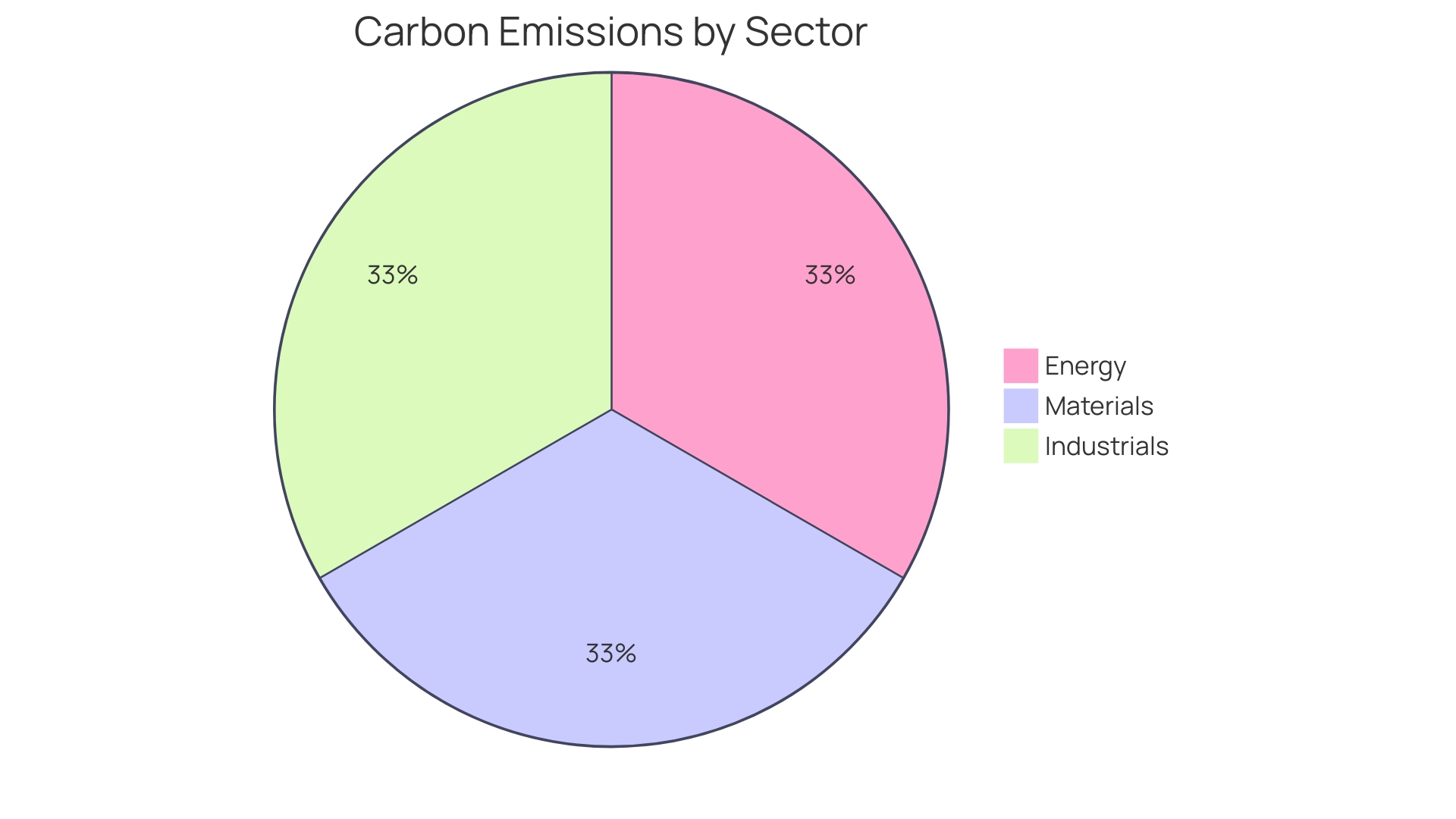
Types of Biomass and Feedstocks
Understanding the spectrum of biomass and feedstocks is pivotal for energy production. Biomass, as defined by the Foundation for Food & Agriculture Research (FFAR), encompasses any organic matter available on a renewable basis, including agricultural crops, trees, residues, and more. The European Environment Agency (EEA) report highlights the importance of grasping the multifaceted roles of biomass, such as in the European Green Deal's context, where sustainable provision meets increasing demand.
Agricultural biomass, predominantly utilized for animal feed and bedding, represents over half of the EU's biomass usage, with a mere 13% for human food consumption. Woody biomass finds its use in construction, furniture, and paper products. The Joint Research Center of the European Commission's data reveals a significant use gap, indicating a need for deeper analysis into biomass consumption footprints.
Moreover, biomass transcends its traditional energy source role through chemical or biological processes. Lignocellulosic biomass, for instance, can be hydrolyzed into sugars that serve as bio-based chemicals and materials precursors, furnishing the bioeconomy with sustainable alternatives. In line with the repower EU plan, the EU's indigenous biogas production increased in 2021, led by Germany, Italy, and France, fostering a reduced reliance on imported fossil fuels and marking progress towards a cleaner energy landscape.
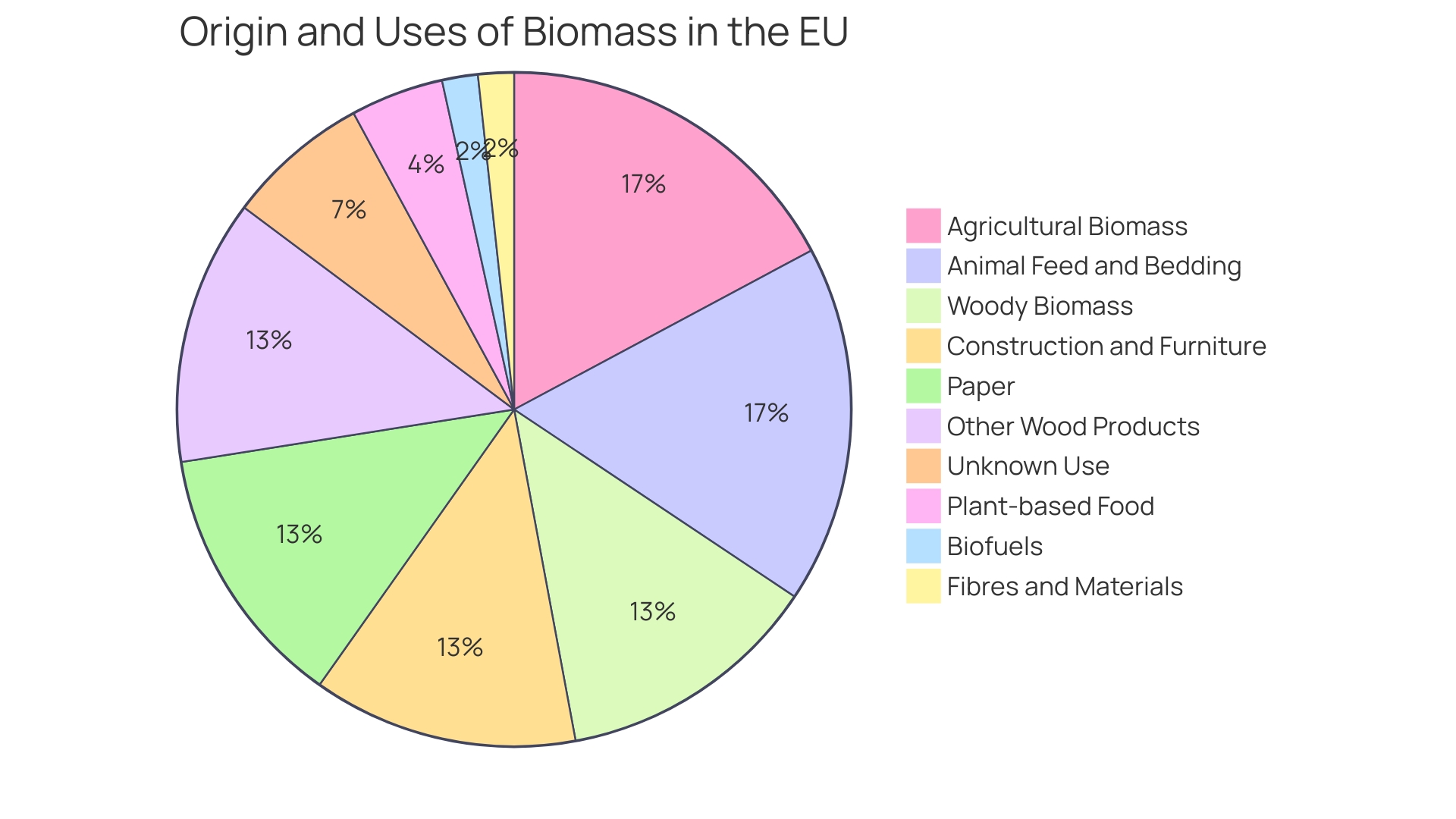
Thermochemical Conversion Processes
Thermochemical conversion processes are integral to transforming biomass into renewable energy, with techniques such as pyrolysis, gasification, and combustion at the forefront. Pyrolysis involves the thermal decomposition of organic materials at elevated temperatures in the absence of oxygen, producing bio-oil, syngas, and biochar. Gasification further converts biomass into a combustible gas mixture through partial oxidation. Combustion, the most direct method, burns biomass to generate heat and power. These processes not only contribute to biofuel production, including ethanol and biogas, but also align with global efforts to transition to low-carbon energy sources.
For instance, the market for biomass heating, propelled by policies and its carbon-neutral potential, is gaining traction. The combustion of biomass releases only as much CO2 as the plant absorbed during growth, resulting in a minimal carbon footprint. Moreover, countries like China, recognizing the value of biomass energy, which accounts for about 50% of the world's renewable energy according to the IEA, are exploring its use to decrease reliance on fossil fuels and mitigate greenhouse gas emissions.
In addition, companies like Hago Energetics are innovating by converting waste materials into clean hydrogen with a negative carbon footprint, addressing global warming and supporting the transition towards green hydrogen production. Their focus on creating biochar to enhance agricultural productivity by retaining water and nutrients exemplifies the versatile applications of thermochemical converted biomass.
Furthermore, modern chemistry is exploring the use of CO2, a byproduct of biomass combustion, as a raw material for producing sustainable economic goods. This innovative approach requires processes to be adaptable to fluctuating energy supplies, a challenge that is being progressively addressed as we harness renewable sources like solar and wind power.
Advancements in biomass conversion technologies offer multifaceted benefits, from providing a sustainable energy source to contributing to carbon dioxide removal and soil enhancement. As research and development continue, the potential for biomass to curb climate change and revolutionize energy structures grows, promising a future with a reduced environmental impact and a greater reliance on renewable resources.
Biological Conversion Processes
Biological conversion processes such as anaerobic digestion and fermentation are pivotal in transforming biomass into biogas and other renewable products. Anaerobic digestion, for example, is an innovative method where microorganisms break down organic matter in the absence of oxygen, producing biogas. This process is likened to a 'giant Crock-Pot', filled with methanogens from cow manure, which consume food waste and manure to generate biogas. Post-digestion, the biogas is purified and upgraded to renewable natural gas (RNG), serving as a sustainable alternative to fossil fuels and aiding in the fight against climate change.
Food waste and agricultural by-products like dairy cow manure, which are challenges in waste management, can thus be repurposed through anaerobic digestion. This not only provides a solution to waste disposal but also creates a positive impact on renewable energy generation and greenhouse gas reduction. Denmark's example of biogas development, which began in the 1920s, showcases the potential of such technologies. Initially used for sludge stabilization and heating, the process has evolved to recover nutrients and generate electricity and heat, illustrating the multifaceted benefits of this technology.
The significance of these processes is underscored by the staggering statistics reported by the World Wildlife Fund (WWF), which indicate that approximately 1.2 billion tons of agricultural produce are wasted annually. This accounts for 15% of total agricultural production, representing not only a loss of resources but also contributing to environmental degradation. By recycling this waste into valuable biogas through anaerobic digestion, we can alleviate the financial burdens associated with waste management, especially for small-scale farmers, and make strides towards a more sustainable agricultural supply chain.
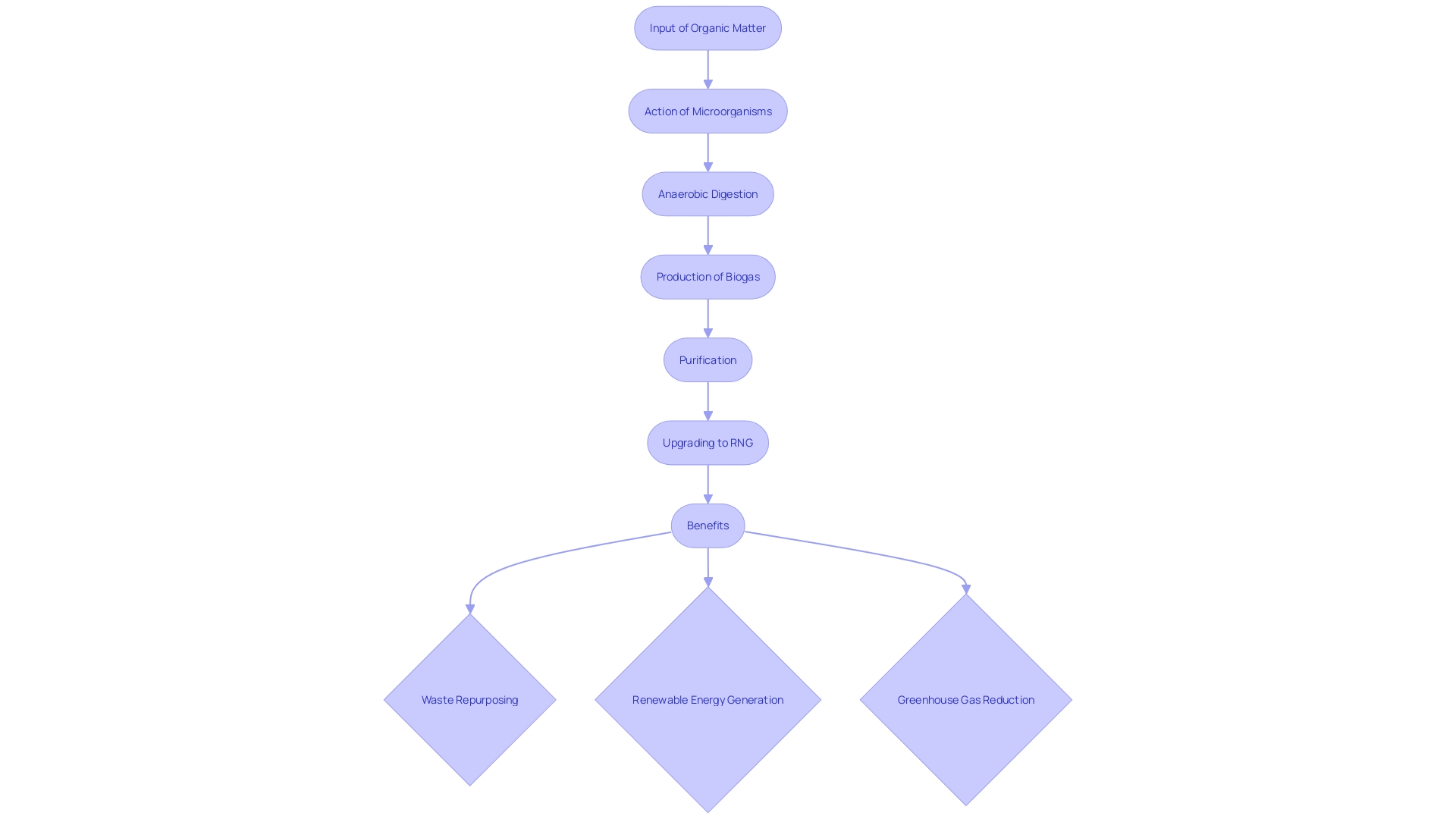
Chemical Conversion Processes
The pursuit of groundbreaking chemical conversion processes for biomass utilization is a vibrant area of innovation within the renewable fuels industry. Hydrolysis and transesterification are two pivotal processes in the transformation of biomass into ethanol and other biofuels. Hydrolysis employs water to break down complex molecules like cellulose into simpler sugars, which are then fermented to produce ethanol. On the other hand, transesterification is a chemical reaction where triglycerides from fats or oils react with alcohol, usually methanol, in the presence of a catalyst to form esters and glycerol, a principle method for producing biodiesel.
These chemical routes are not merely theoretical constructs; they are part of a broader context where, for instance, carbon dioxide, a notorious greenhouse gas, is harnessed alongside hydrogen and other reactants to create valuable products such as lower olefins and alcohols. The adaptability of these processes to fluctuating supplies of energy and raw materials is crucial, especially when considering renewable energy sources like wind and solar power. Chemical conversion technologies, including those that facilitate the transition from crude oil to chemicals through thermal and catalytic means, are being advanced by teams of scientists and engineers. They are essential for developing a diverse array of technology options that can accommodate different crude types, product slates, and economic considerations.
Moreover, the concept of material cycles is becoming increasingly relevant, with an emphasis on plastics as indispensable for a climate-neutral future. Chemical recycling methods like pyrolysis, gasification, and chemolysis are transforming the way plastics are reincorporated into the production cycle, yielding high-quality raw materials and addressing the limitations of mechanical recycling.
Current statistics underscore the importance of these efforts, with ethanol being a major contributor to the Renewable Fuel Standard's obligations in the United States. Approximately 98% of commercial gasoline in the country contains ethanol, predominantly derived from corn. The integration of chemical conversion processes into the biofuel industry is, therefore, a testament to the sector's commitment to innovation, sustainability, and resource efficiency.
Key Technologies and Methods
Advancements in catalyst development are pivotal for optimizing biomass conversion processes. The use of ligands, for instance, enhances both the yield—how much of the desired product is produced—and the selectivity—the specificity of the product—of chemical reactions. This precision in catalysis is a cornerstone in industrial chemistry and pharmaceutical manufacturing, aiming for the highest possible efficiency and specificity. In the context of biomass conversion, ligands play a crucial role, as outlined in the research paper 'Autonomous reaction pareto-front mapping with a self-driving catalysis lab,' published in Nature Chemical Engineering.
Biomass conversion technologies also benefit significantly from process optimization. The integration of renewable energy systems into biomass conversion processes is gaining traction, as evidenced by the recent French project for a green hydrogen production and distribution station, which includes renewable hydrogen production from sustainable biomass. The HYNOCA® solution by Haffner Energy, a technology protected by 15 patent families, exemplifies the commitment to enhancing biomass thermolysis technologies and contributing to a circular and negative carbon footprint economy.
Understanding the catalytic mechanism and the resulting processes and technologies is essential. The focus ranges from the rational design and synthesis of advanced catalysts to their structural and active site characterization. This comprehensive knowledge base accelerates progress in renewable resource conversion and supports a sustainable future. The integration of fundamental theories, computational methods for catalyst design, and novel materials for biomass processing underscores the importance of interdisciplinary approaches to biomass catalytic conversion.
The importance of biomass as a versatile and renewable resource is highlighted by the Foundation for Food & Agriculture Research (FFAR), with potential applications extending beyond energy production to biotechnology and biomanufacturing. Lignocellulosic biomass, for example, can be transformed into sugars, precursors for bio-based chemicals and materials, reinforcing the role of biomass as a pivotal resource in the U.S. bioeconomy.
Finally, as the renewable energy sector continues to evolve, publications like the Global Status Report (GSR) and data from the International Renewable Energy Agency (IRENA) provide valuable insights into the growth and trends of renewable energy capacities, including those dedicated to biomass and biofuel technologies. These resources reflect the collective knowledge of experts and serve as a testament to the ongoing efforts to make renewable energy solutions more accessible and impactful on a global scale.
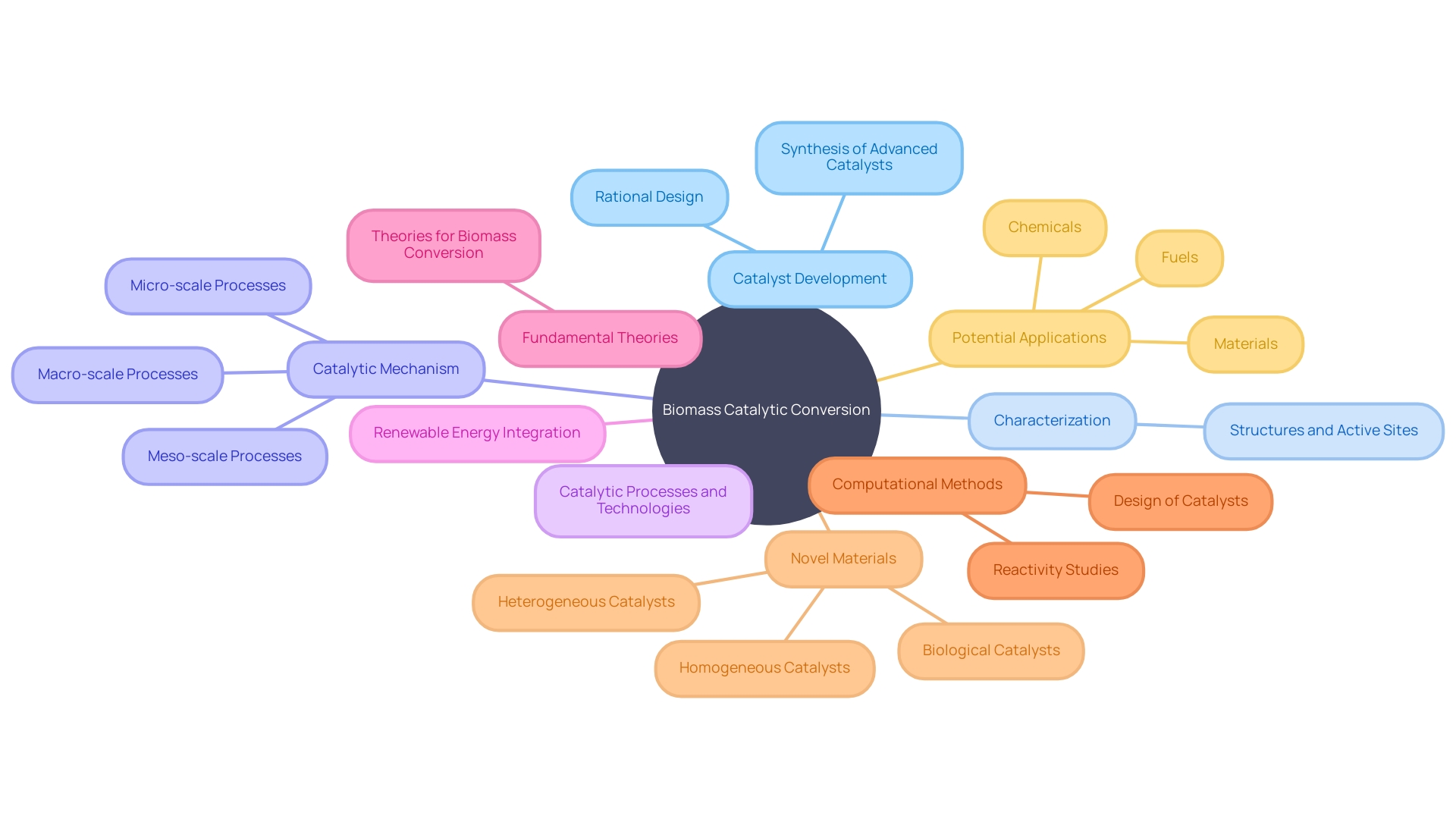
Production of Biofuels for the Transport Sector
The transportation industry stands as a notable source of greenhouse gas emissions, underscoring the urgent need for sustainable alternatives to conventional fossil fuels. Biofuels emerge as a viable solution, offering a renewable and lower carbon emission energy source, particularly in sectors like heavy transport and industry where decarbonization poses significant challenges. Ethanol, a prominent biofuel, plays a critical role in this transition.
Biofuels are derived from organic matter, with first-generation biofuels produced from crops like sugar cane and corn, and second-generation biofuels utilizing waste materials. Notably, second-generation biofuels are gaining attention due to their potential to reduce net CO2 emissions by up to 90% over their lifecycle compared to fossil fuels. These advancements are crucial for industries and transport modes that are harder to electrify.
In practice, countries such as Spain have incorporated biofuels into road transport for years, blending them with traditional fuels to power diesel and gasoline engines. This approach demonstrates the practicality of biofuels as a sustainable ally in the transition to a low-carbon economy.
Moreover, the European biofuel market, with key players like France, the UK, Germany, and Poland, is witnessing significant growth, supported by EU policies promoting biofuel use. This regional development reflects a broader commitment to sustainable energy solutions and the potential for biofuels to contribute meaningfully to environmental and economic goals, including emission reduction and job creation.
These advancements occur within the broader context of technological capabilities and environmental considerations, aiming to provide a balanced and sustainable approach to meeting energy needs. As the biofuel industry evolves, it faces the challenge of scaling up production and market integration, which involves securing funding and navigating technical readiness levels to achieve commercial success.
In conclusion, biofuels, particularly ethanol, offer a promising path forward for the transport sector to reduce its environmental impact. As the industry works to overcome the hurdles of commercialization and integration, the potential for significant CO2 emission reductions and the creation of sustainable business models within the transportation industry becomes increasingly attainable.
Electricity Generation via Advanced Conversion Concepts
Advanced biomass conversion technologies are making strides in the production of clean and renewable electricity. Particularly, biomass gasification combined with gas turbines or fuel cells has shown significant promise. Gasification processes convert biomass into a combustible gas mixture, often referred to as syngas, which can then be utilized to power turbines or fuel cells. The adaptability of biomass, which includes a diverse array of organic materials from wood pellets to agricultural residues, allows for a consistent energy supply.
One notable example of gasification's potential is the HyFlexPower project at a Smurfit Kappa paper mill in France. Here, renewable energy-generated electricity is transformed into green hydrogen, which is subsequently used to fuel a turbine during periods devoid of wind or sun, highlighting the role of biomass in industrial decarbonization efforts. This Power-to-Hydrogen-to-Power demonstrator underscores the capacity of renewable hydrogen, derived from biomass, to serve industrial sites with renewable electricity.
The European Commission-backed initiative demonstrates the practical applications of this technology in real-world conditions. It serves as a testament to the collective effort of local ecosystems, including regional players and SMEs, to foster a green hydrogen production and distribution station. This local consortium, supported by ADEME's financial aid within the France 2030 framework, emphasizes the significance of collaborative efforts in advancing renewable energy technologies.
Investments in renewable energy, including biomass, are on the rise, reflecting a broader understanding of its potential. In 2021, renewable sources like hydropower, wind, and solar contributed significantly to the world's electricity generation, with biomass energy emerging as a key player thanks to its versatility and integration capabilities. As the largest renewable energy source, hydropower generated 29% of the world's electricity, followed closely by wind and solar power.
Biomass is not only a tool for energy production but also a means for carbon dioxide removal (CDR), essential for achieving net-zero emissions goals. It is imperative that sustainable practices are employed to ensure biomass's carbon-negative impact. With the energy-intensive industries and heavy mobility sectors seeking decarbonization solutions, biomass and its derivatives, including decarbonized hydrogen, are becoming increasingly vital in reaching climate objectives.
The transformation of renewable energy into a reliable electricity supply through biomass conversion is an evolving field with far-reaching implications for a sustainable future. As such, these technologies represent a significant step forward in the transition to greener energy sources.
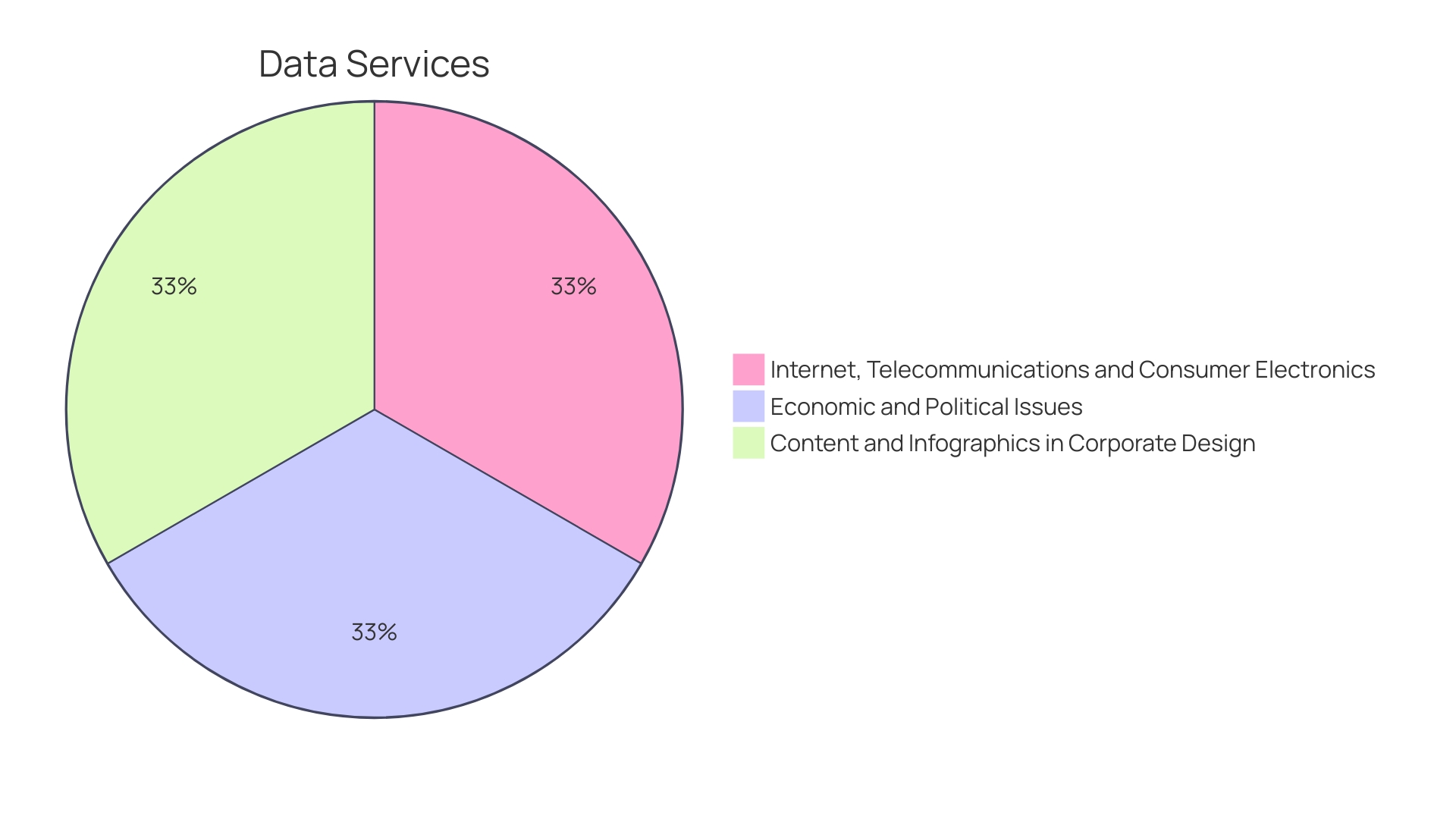
Integration with CO2 Capture and Sequestration Technology (CCS)
To address the critical challenge of climate change, the integration of carbon capture and sequestration (CCS) with biomass conversion processes represents a significant stride forward. Biomass, derived from organic materials like wood, plant residues, and animal waste, plays a dual role in environmental management. It not only acts as a renewable alternative to fossil fuels but also has the potential to actively remove carbon from the atmosphere. The utilization of agricultural by-products, such as corn stover, which includes the unused parts of corn plants, exemplifies a sustainable approach to biomass usage.
CCS technology serves to enhance the environmental benefits of biomass by capturing carbon dioxide (CO2) emissions at the source, such as power plants or industrial sites. The process involves separating CO2 from other emitted gases before it reaches the atmosphere. Once captured, the CO2 can either be stored underground or repurposed for products like concrete and chemicals. This is distinct from carbon removal, which focuses on extracting existing CO2 from the atmosphere through methods like reforestation and direct air capture.
The significance of CCS in tandem with biomass is underscored by the ambitious targets set by corporations and governments alike. An example is BP Inc.'s commitment to achieving net-zero emissions by 2050, which encompasses a reduction in oil and gas production and a shift towards greener energy practices. Moreover, the UK has demonstrated resilience in transitioning to renewable energy sources, such as wind power, despite economic challenges.
As the world moves towards a greener future, biomass and CCS technologies combined offer a robust solution for carbon management and climate stabilization. It is imperative, however, to establish guidelines to ensure these practices contribute to a genuinely carbon-negative impact, advancing us closer to net-zero emissions goals.
Challenges and Controversies in Biomass Conversion
Biomass conversion, a critical component of the green energy transition, inherently involves intricate environmental, economic, and social dimensions. Land use and feedstock availability are pivotal in this equation, with sustainability issues taking center stage. A key report by the European Environment Agency (EEA) underscores the necessity for a detailed understanding of biomass's multifaceted roles. The report was born from a realization that to meet the European Green Deal's objectives, a comprehensive grasp of biomass requirements and sustainable supply within the EU is essential.
More than half of the EU's agricultural biomass is dedicated to animal feed and bedding, with a mere 13% contributing to human food. The remainder is dispersed across uses like biofuels, fibers, and materials. An alarming knowledge gap exists where nearly one-fifth of agricultural biomass use remains unidentified, posing challenges for environmental footprint assessments. Woody biomass, on the other hand, finds its majority use in construction and the production of furniture, paper, and other wood products.
The EEA report facilitates an ongoing dialogue among stakeholders, aiming to reconcile the co-benefits and trade-offs of biomass use within the framework of EU policies. This includes discussions regarding ecosystems, carbon sequestration, and the balance between biomass production and consumption. The report's findings highlight the need for meticulous risk assessment and monitoring to ensure safe deployment and sustainability, as indicated by experts in the field.
California's biomass workshop revealed the state's struggle with wood waste, emphasizing the urgency for innovative resource management solutions that promote economic development and reduce greenhouse gas emissions. Similarly, the Foundation for Food & Agriculture Research defines biomass as a renewable organic matter, offering a glimpse into the potential of biomass beyond energy production. It can serve as a feedstock for biomanufacturing, signifying its role as a cornerstone for the U.S. bioeconomy.
Understanding the intricacies of biomass conversion is paramount for energy experts and stakeholders who are navigating the challenges and opportunities of this renewable resource. The wealth of data and analyses from the EEA report and other expert insights provides a solid foundation for informed decision-making in the pursuit of a sustainable bioeconomy.
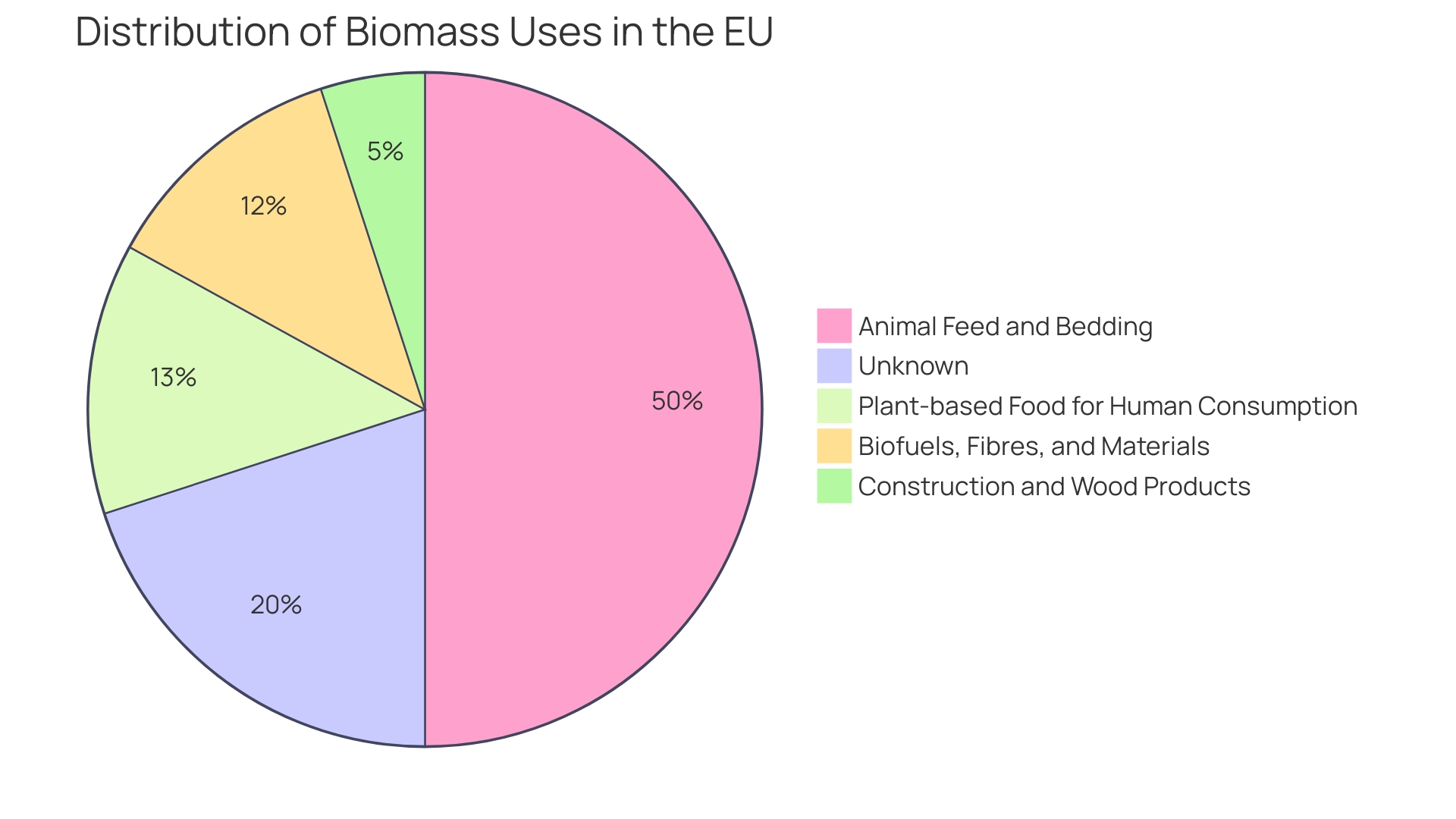
Future Outlook and Trends
Emerging technologies and research in biomass conversion are pivotal for the future of sustainable energy production. These advancements are not just theoretical but are grounded in concrete studies and policy initiatives that seek to address the growing demand for biomass and its sustainable provision within the European Union (EU). A key goal is to align with the European Green Deal's objectives, which necessitates a deeper understanding of biomass's multiple roles and its impact on ecosystems and carbon sequestration.
The European Environment Agency (EEA) has taken strides to increase awareness about biomass, its origins, and consumption patterns, revealing that the majority of the EU's supply is homegrown, with agricultural and woody biomass being the primary categories. Intriguingly, more than half of agricultural biomass serves as animal feed and bedding, while a mere 13% goes towards plant-based food for human consumption. This knowledge gap in biomass usage underscores the need for a more nuanced analysis of its environmental footprint.
Recent policy drafts from Green Party-led ministries in Germany propose stringent regulations on the use of high-quality biomass for energy generation, advocating for a shift towards residual and waste materials. This reflects a broader trend towards sustainability and the recognition of the finite nature of wood from forests, with projections indicating a potential decrease from 75 million cubic meters in 2020 to 58-72 million by 2050. Such strategies are aimed at preventing new dependencies and the offshoring of greenhouse gas emissions through unsustainable imports.
Innovative companies are exploring the use of non-food woody biomass, transforming by-products of forestry and agriculture into valuable product streams, including high-purity lignin. This approach not only sequesters carbon but also leverages renewable resources to create low-impact products and materials, contributing to a reduced reliance on fossil fuels.
Understanding biomass's role in climate change mitigation is crucial, as it offers a way to capture atmospheric carbon or serve as an alternative to fossil fuels. This versatility is evident in the use of crops like corn for biomass production, where even agricultural waste (e.g., corn stover) is utilized sustainably. The emphasis on carbon dioxide removal (CDR) as a tool for achieving net-zero emissions underscores the importance of establishing guidelines to ensure a carbon-negative impact.
Biomass's potential is recognized by governments as a solution to the climate crisis, with its conversion into biofuels and its breakdown into building blocks for biotechnology applications. As the U.S. bioeconomy grows, the focus on using biomass as a feedstock for an array of chemicals further highlights its environmental and economic benefits.
In summary, the future outlook for biomass conversion technology involves a multi-faceted approach that incorporates cutting-edge research, stringent policies, and innovative applications, all aimed at fostering a sustainable and carbon-conscious energy landscape.
Case Studies and Examples of Successful Implementation
Biomass conversion technologies stand at the forefront of sustainable energy solutions, with projects around the globe showcasing their viability and transformative potential. A prime example is the innovative initiative in France, where a consortium has embraced the production of renewable hydrogen from local biomass. This project, under the EcosysH2 program supported by ADEME, exemplifies how industrialists, regional authorities, and SMEs can collaborate to foster a fossil fuel-free local ecosystem.
In the realm of biomass thermolysis, Haffner Energy's HYNOCA® solution represents a significant leap forward. Protected by a suite of patents and drawing on three decades of expertise, this technology not only produces green hydrogen but does so with a negative carbon footprint, thanks to the co-production of biochar. The project in Brognard is a testament to Haffner Energy's capacity to drive ambitious ventures, demonstrating that such sustainable approaches can be replicated wherever biomass resources are available.
The success of these projects is further underscored by the growing interest in biomass as a tool for climate change mitigation. With its capacity for carbon dioxide removal and as an alternative energy source, biomass is increasingly recognized for its role in helping achieve net-zero emissions. Such innovative uses of biomass extend beyond energy production; the material's breakdown into functional components paves the way for a multitude of biotechnological applications, positioning biomass as a vital resource in the burgeoning bioeconomy.
These case studies not only highlight the practical applications of biomass technologies but also reflect a broader movement towards green innovation. As resource-rich regions and industries explore cleaner energy sources, the integration of sustainable practices becomes critical in addressing the global climate crisis.
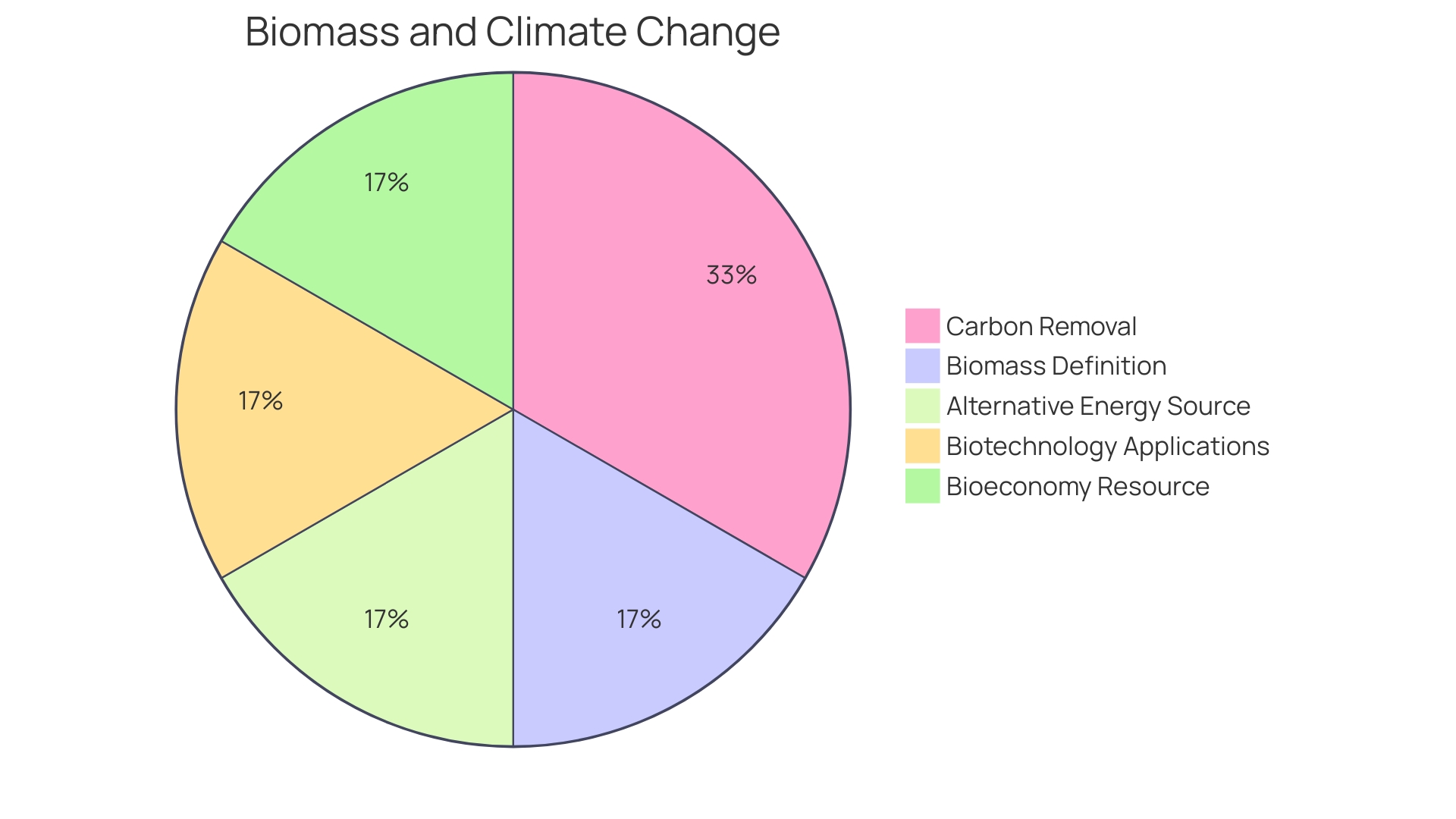
Conclusion
In conclusion, biomass conversion technologies revolutionize the renewable fuels industry, providing a promising path towards a sustainable future. Thermochemical, biological, and chemical conversion processes play integral roles in transforming biomass into renewable energy and biofuels. Key technologies and methods, such as catalyst development and process optimization, enhance the efficiency of biomass conversion.
Biofuels offer a renewable and lower carbon emission energy source for the transport sector, contributing to reduced environmental impact. Advanced conversion concepts, like biomass gasification, show promise in producing clean and renewable electricity. Integration with carbon capture and sequestration (CCS) technologies enhances the environmental benefits of biomass conversion.
Despite challenges and controversies surrounding land use and feedstock availability, ongoing research, policy initiatives, and innovative projects demonstrate a commitment to addressing these issues and advancing the sustainable bioeconomy.
Looking ahead, emerging technologies and research in biomass conversion offer a multi-faceted approach to sustainable energy production. Projects and case studies worldwide showcase the viability and transformative potential of biomass conversion, from renewable hydrogen production to biomass thermolysis technologies.
In summary, biomass conversion technologies pave the way towards a sustainable future, reducing environmental impact and promoting reliance on renewable resources. The integration of biomass with renewable energy systems, CCS technologies, and innovative applications drives progress towards a more sustainable and carbon-conscious energy landscape. As the renewable fuels industry continues to evolve, significant carbon dioxide reduction and the creation of sustainable business models become increasingly achievable.




